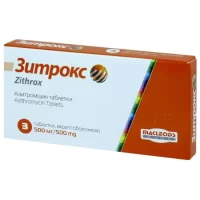$75.00
Purpose: Inhibits bacterial cell wall synthesis for severe infections.
Description
Medaxon (ceftriaxone) powder for injections 2 g. №10 vial
Ingredients
Active ingredient: Ceftriaxone. Inactive ingredients may include diluents such as L-arginine.
Dosage
Dosage: The usual adult dose for most infections is 1 to 2 grams once a day. Dosage may vary based on the type and severity of the infection.
Indications
Indications: Medaxon is indicated for the treatment of various bacterial infections, including respiratory tract infections, skin and soft tissue infections, urinary tract infections, and more.
Contraindications
Contraindications: Do not use Medaxon if you are allergic to ceftriaxone or other cephalosporin antibiotics.
Directions
Administration: Medaxon is administered by intravenous or intramuscular injection. It should be reconstituted with the appropriate diluent as directed.
Scientific Evidence
Efficacy: Studies have shown that ceftriaxone, the active ingredient in Medaxon, is effective against a wide range of bacterial infections. Research published in the Journal of Antimicrobial Chemotherapy demonstrated the efficacy of ceftriaxone in treating severe infections.
Additional Information
Storage: Store Medaxon vials at controlled room temperature. Protect from light and moisture. Keep out of reach of children.
Pharmacological Effects: Ceftriaxone exerts its antibacterial effect by interfering with the synthesis of the bacterial cell wall, leading to cell death. It has a broad spectrum of activity against both Gram-positive and Gram-negative bacteria.
Clinical Trials: Clinical trials have demonstrated the efficacy of ceftriaxone in various infections, including meningitis, pneumonia, and gonorrhea. A study published in Clinical Infectious Diseases showed that ceftriaxone was highly effective in the treatment of community-acquired pneumonia.







Recent Reviews